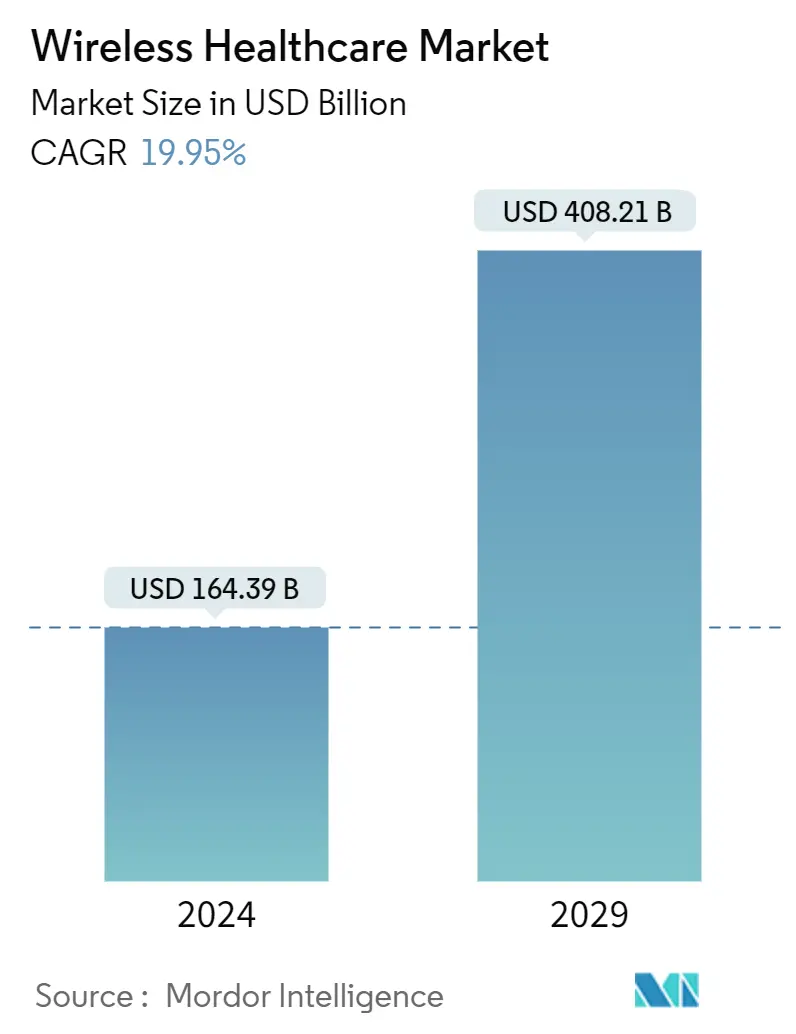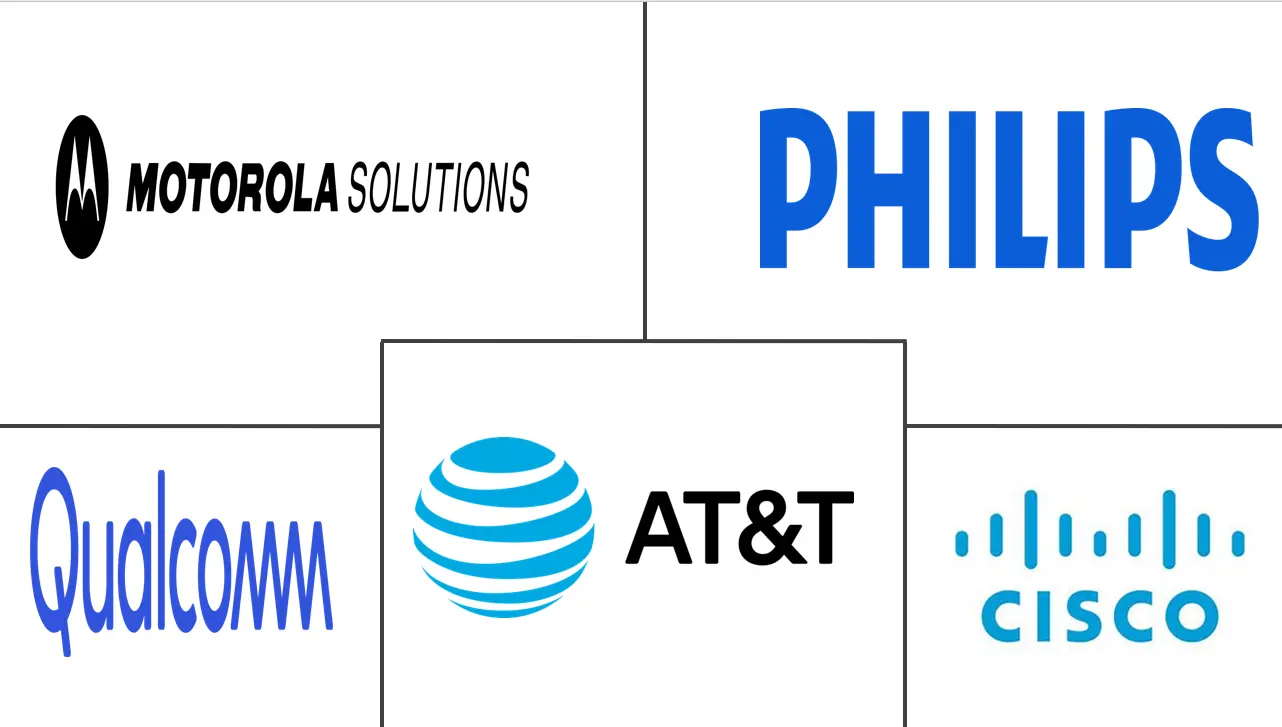Market Size of Wireless Healthcare Industry

| Study Period | 2019-2029 |
| Market Size (2024) | USD 164.39 Billion |
| Market Size (2029) | USD 408.21 Billion |
| CAGR (2024 - 2029) | 19.95 % |
| Fastest Growing Market | Asia-Pacific |
| Largest Market | North America |
Major Players
*Disclaimer: Major Players sorted in no particular order |
Need a report that reflects how COVID-19 has impacted this market and its growth?
Wireless Healthcare Market Analysis
The Wireless Healthcare Market size is estimated at USD 164.39 billion in 2024, and is expected to reach USD 408.21 billion by 2029, growing at a CAGR of 19.95% during the forecast period (2024-2029).
The wireless healthcare market is major driven by increasing digitization, growth in the use of connected devices, advancements in wireless technology, and rising adoption of patient-centric approaches by healthcare organizations coupled with growing demand for quality healthcare.
- The healthcare sector worldwide has rapidly undergone a significant digital transformation over the past few years. The penetration of the internet and wireless communication technology is driving the market studied. In a connected hospital, caregivers use wireless medical equipment to provide patients with quality care rather than being preoccupied with time-consuming administrative tasks. Doctors and nurses can easily access up-to-date patient information, enabling treatment decisions supported by real-time medical information, thus, resulting in improved outcomes for patients.
- Wearable devices for continuous monitoring are driving the market. Owing to the proliferation of smartphones and the acceptance of wearable devices, medical devices and diagnostic centres are experimenting with body-worn sensors that can monitor vital signs and transmit them in real time to an online platform that can be remotely accessed.
- Further, the adoption of wearable devices in this sector has been gaining traction in recent times, which, in turn, has been one of the significant factors influencing the wireless healthcare market. The major trends in wearable connected devices include increasing demand for pain management wearable devices, increasing use of wearables for cardiovascular disease management, and others.
- Moreover, the growing demand for remote patient monitoring solutions due to the aging population and long-term chronic disease conditions is the major factor impacting the market's growth. There is constant pressure on hospital administrators to lower costs while continuing to improve the level of patient care. In this environment, hospitals use wireless technologies to operate more efficiently, support patient care, and improve their experience.
- For instance, to better understand and improve the workflow of nursing staff, hospitals are equipping nurse ID badges with an RFID tag that works with the hospital's Wi-Fi network. These tags track the movement of the nurses throughout their shifts. The data is captured and analyzed, providing insights to the hospital to improve the processes. Wireless RFID technology also allows hospitals to track the real-time location of critical equipment and the condition of the equipment.
- However, issues about cybersecurity and privacy are restraining the market growth, as vast amounts of healthcare data are generated during treatment in medical centers, such as hospitals and clinics, and the theft of such data can damage patients' privacy.
- The outbreak of COVID-19 enabled the growth of the market studied. The need for social distancing supported the use of wireless technology in the healthcare industry. This enabled the deployment of remote monitoring and telemonitoring systems, which demanded wireless infrastructure deployment. Also, government health bodies were allowing healthcare facilities to expand their remote monitoring spectrum. For example, in March 2020, FDA cleared non-invasive vital sign measuring devices to expand their use to help healthcare providers to monitor patients remotely. Such initiatives had driven the market for wireless healthcare during the pandemic.
